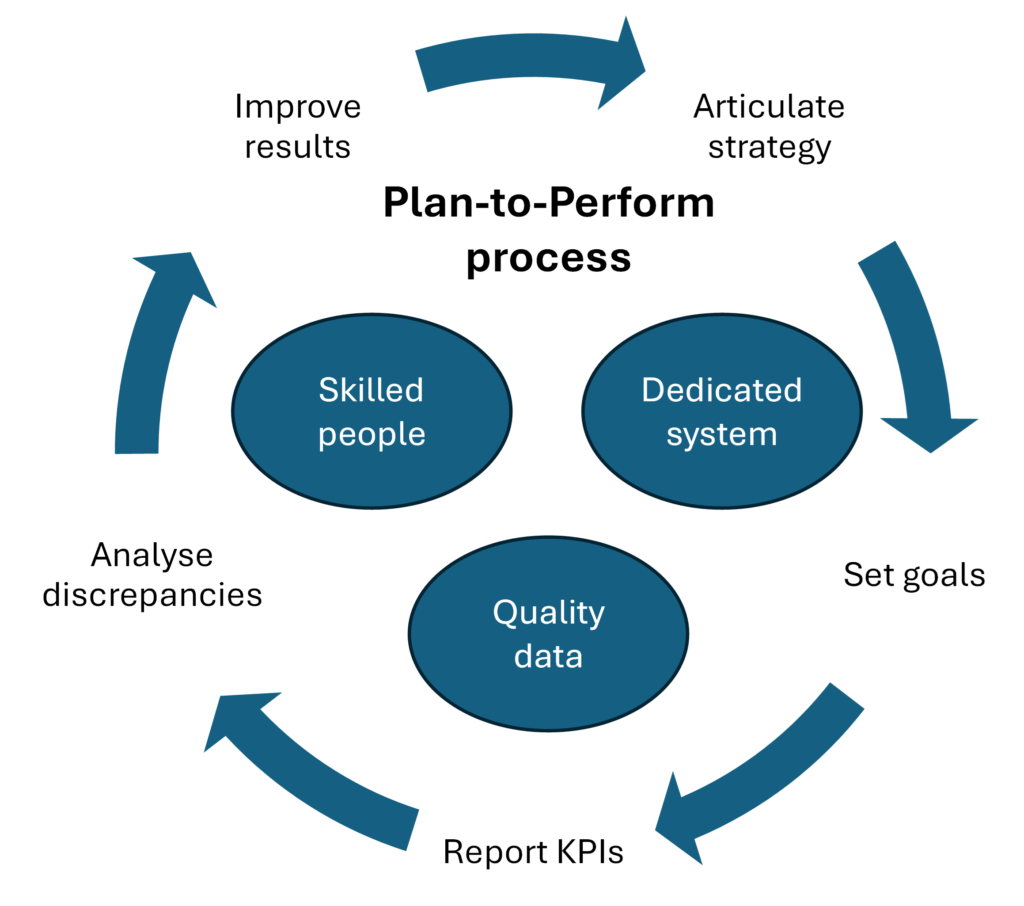Plan to Perform
The idea behind the end-to-end (E2E) process concept is to provide a holistic view of business operations, focusing on the complete flow of a specific process from its beginning to its end. This approach aims to enhance efficiency, improve performance, and ensure that every step of the process is aligned with the business’s overall objectives. The key benefits of adopting an E2E perspective include:
Streamlined operations: By eliminating unnecessary steps and focusing on value-added activities, companies can streamline operations, reduce costs, and increase productivity.
Increased transparency: By looking at processes from start to finish, companies can better identify inefficiencies, bottlenecks, and areas for improvement.
Improved collaboration: An E2E approach encourages different departments and teams within an organization to work together, fostering a more collaborative and integrated working environment, because inputs and outputs as well as hand-off / hand-over points are clearly defined.
There are multiple end-to-end process that help streamlining activities and improving outcomes, examples are: Record-to-Report, Hire-to-Retire, Customer-to-Cash or Campaign-to-Conversion. A specific end-to-end process that is regarded as a Best Practice is the Plan-to-Perform (P2P) process. This specific process focuses on optimizing operational and financial planning to achieve superior performance outcomes and value adding analyses for differences between the plan and actual results.
Designing the Plan-to-Perform process
So, what exactly does Plan-to-Perform entail, and how should companies approach its design and execution? The following 5 steps are the core of a Plan-to-Perform process.
- Articulate the company strategy to the various business process owners and let them make a bottom-up budget and also provide a top-down company goal. The discrepancies and tensions between the bottom-up forecasts and the top-down goals form the input for a strategic discussion that translates into clearly defined goals.
- Set unambiguous goals for the various business activities (manufacturing, HR, Sales, etc.) based on the strategic discussions and recorded assumptions.
- Report selected Key Performance Indicators on actual performance compared to the planned results.
- Analyse discrepancies between the goals and actual performance and identify reasons and clarifications for these differences.
- Address the gaps by either making changes in the execution of the various business activities to realise the set target, or adjust targets if assumptions and developments in the business environment require an update of the plan into an updated budget.

Requirements for the Plan-to-Perform process
The journey begins with a solid foundation: skilled individuals. The human element cannot be overstated; expertise is required to understand the nuances of the business and with ability to navigate its complexities.
Next to the right set of skills, a state-of-the-art planning system is essential. This technology acts as the backbone of the Plan-to-Perform process, providing the tools necessary for financial planning, analysis, and reporting. With the right system in place, businesses can ensure accuracy, enhance efficiency, and facilitate better decision-making. In this blog you can read why a solid and reliable planning process should not be executed with a spreadsheet.
However, even the most skilled team and advanced system would falter without one critical ingredient: quality data. Data is the lifeblood of the Plan-to-Perform process. Accurate, timely, and relevant data inputs allow businesses to make informed decisions, adapt to changes, and stay ahead of the curve. Too little, too late or wrong data will frustrate your Plan-to-Perform process, but almost as bad for insightful results is too much data. An overload of operational details may cause extra work to get the numbers updated on a periodic basis and it may create the illusion of being complete, while the additional data does not actually improve accuracy.
Conclusion
To conclude, a well-designed and well-executed Plan-to-Perform process is a vital component of any business strategy, demanding skilled people, advanced technology, and high-quality data. By designing and executing this process effectively, companies can ensure that their strategic plans are not just aspirations but achievable realities. You can assess your own planning maturity level with our downloadable best practice guide.
If you wat to sit back and listen to the Smartbooks story and have a short demo of our software, you can watch our recorded webinar by clicking here.

